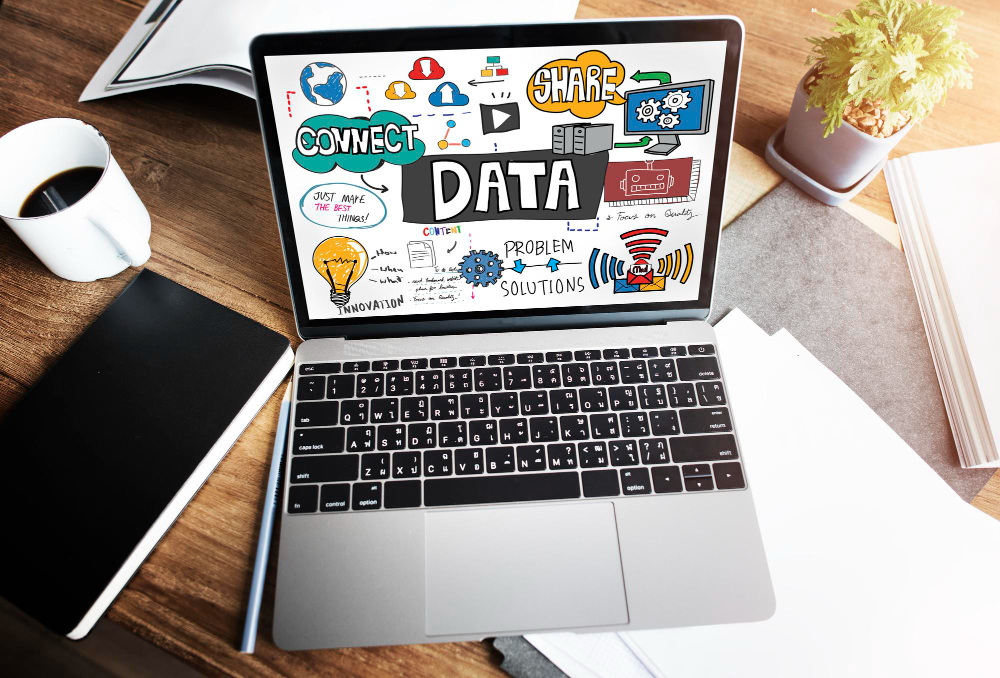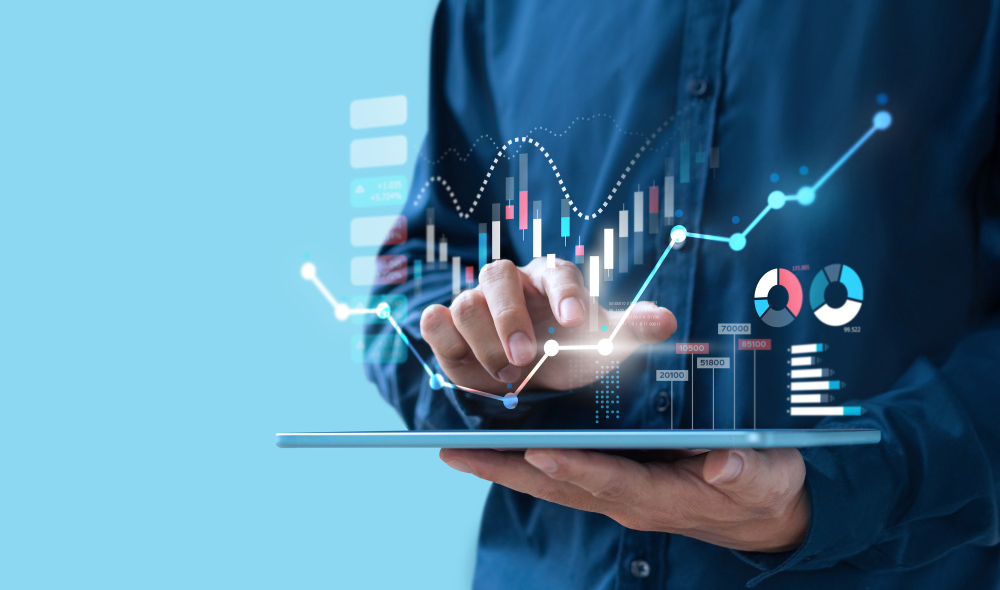What Is The Difference Between Data Vs. Information?
The words “data” and “information” might seem, at first glance, to mean the same thing. However, the two terms have distinctly different meanings. So, what is data vs. information?
Data is composed of specific facts and statistics. Information is the way the user organizes, contextualizes, and interprets that data. In other words, data is the building blocks, and information, when usefully organized, is the structure those building blocks unite to create. Ideally, you can use data and information together to help identify and solve problems, improve your business performance, and set a course for future success.
In this post, we will delve into:
- The definitions of data vs. information
- The key differences between data vs. information
- Examples of both data and information
- How you can turn raw data into useful information to benefit your business
- How your business can use proxies to make the most of data vs. information
What Is Data?

When discussing the differences between data vs. information, it helps to define each term.
Etymologically, the word “data” is the plural of the Latin word datum, which essentially means “a fact given or granted.” In the modern vernacular, data is a collection of discrete, individual values that describe quantity, quality, fact, statistics, or other basic units of meaning. In its raw form, data carries no significance or meaning without interpretation.
Here are some of the basic characteristics of data:
- Data comes in the form of characters, such as letters or numbers.
- Data is a set of unorganized variables without context that can develop into ideas or conclusions only with processing or analysis.
- We generally structure data in tables, graphs, data trees, or flowcharts.
- We usually measure digital data in units of bits and bytes.
Quantitative data vs. Qualitative data
There are two primary types of data: quantitative and qualitative. Qualitative data is nonnumerical data that describes, characterizes, and approximates. Qualitative data connects to measuring the qualities of something. For example, a person’s name, occupation, or eye color would be qualitative data.
Quantitative data, on the other hand, is data that can be measured or counted using numerical values. It correlates directly to quantity. For example, a product’s volume, weight, or cost would be quantitative data.
What Is Information?

The word “information” has a somewhat more complicated etymology. The word itself derives from both the Old French word informacion (which means “advice or instruction”) and the Latin word informationem (which means “outline, concept, or idea”).
Merriam-Webster defines information as “knowledge obtained from investigation, study, or instruction.” In terms of data vs. information, information is data that is organized in a useful manner so that the user can derive meaning from it. When you process, organize, analyze, interpret, or otherwise render data, it becomes meaningful information.
Unlike data, which is usually represented by characters, letters, or numbers, information is often presented as ideas or references.
The Main Distinctions Between Data vs. Information
When it comes to data vs. information, keep in mind that data consists of specific individual values, but information is the result when that data is collated, organized, processed, analyzed, and assigned meaning.
Data does not depend on information to exist, but information cannot exist without the data to form it. However, data in and of itself is meaningless. Information gives data meaning, purpose, insight, relevance, and usefulness. Data points are individual values that can be unrelated, whereas information organizes and maps out that data to provide a wider view of the correlations among those data points.
In a nutshell, data provides the values, and you interpret that data to get information.
Examples of Data vs. Information

We’ve covered the definitions of data and information and the differences between data vs. information. So, what is an example of data vs. information?
5 Examples of data
The following numerical values, without context, would be essentially meaningless:
- The number of visitors a website receives during a given time frame
- A competitor’s product prices
- The daily temperature in a certain location during a particular week
- Individual customer survey responses
- The daily price of a company’s stock
5 Examples of information
We will use the examples of data listed above to derive these five examples of information:
- Our website traffic increases on the weekends.
- The competitor’s overall prices have gone down over the past year.
- The average temperature this week was 33 degrees Fahrenheit.
- The current customer sentiment seems to be mostly positive based on the survey results.
- The company’s stock had a net decrease of 3% this week.
Data vs. Information vs. Knowledge
Just when you thought you had mastered the concept of data vs. information, we are going to add in a third concept: knowledge. Is there a difference between data, knowledge, and information?
You can look at it this way: if data is a set of values or facts, and information is the meaning you can derive by analyzing and interpreting that data, then knowledge is how the user’s mind processes and internalizes that information. People apply the insights they have learned from various human experiences to data and information to turn them into knowledge.
In the context of data vs. information, knowledge is more closely related to information. It’s information with nuance.
How Raw Data Becomes Useful Information

Raw data can come from a multitude of sources and methods, including data mining, surveys, social media monitoring, and many more. Its storage and processing depend on the data’s origin and the reason for its collection. There are two basic steps involved in turning raw data into meaningful information.
1. Extract the raw data.
Extraction involves obtaining the raw data from its source. Before you begin extracting data, it is important to ensure your target website or resource allows data collection.
There are many resources available on the internet from which you can obtain quality raw data, including websites, databases, and social media platforms.
You can use various data extraction tools to gather data from these sources. One efficient and cost-effective method is web scraping, which is the process of obtaining data from websites and servers. You can simplify and speed up the web scraping process by using an automated web scraping tool, such as Scraping Robot, to collect data without the need to hire a developer or write your own script.
2. Analyze the data.
Once you have collected the data, you must process and interpret it. Data analytics is the science of analyzing raw data and using it to make conclusions or decisions. You can study any type of data to gain insight into various subjects, including trends, metrics, and areas for improvement. This step is where data vs. information becomes more apparent.
There are several types of data analysis that businesses can use to improve their performance, efficiency, and profitability and to make better-informed decisions.
- Diagnostic analytics: This type of data analysis centers around determining why something happened.
- Predictive analytics: This type of data analysis enables you to predict what will likely happen based on past data patterns.
- Descriptive analytics: This kind of analysis describes trends, patterns, and events over a certain period.
- Prescriptive analytics: This type of analysis can provide a suggested course of action.
How to use data vs. information in business
Data vs. information plays an important part in business. Businesses of all sizes, types, and industries already rely on data. In the competitive global market, it is essential to collect data and analyze it for a wide variety of reasons. You can obtain data about any number of subjects, including:
- Past or current customers
- Prospective clients
- Competitors
- Product or service pricing
- Employees and job applicants
- Business expenses
- Sales and leads
- Manufacturing
- Inventory
- Potential new markets
- Real estate
- Current or potential suppliers and vendors
Business data can encompass all the facts, details, and statistics a company can gather about most business-related topics. Companies use business data to gain insight into their performance, potential improvements, which products or services their customers want, and so on. They can collect business data, analyze it, transform it into meaningful information, and use it to make informed business decisions.
Some of the types of data that companies gather can include:
- Website analytics: This data can provide important insights about your company’s website, including the most popular pages, visitors’ geographical locations, marketing campaign effectiveness, and more.
- Customer data: This can contain data about past and current customers, such as purchase histories and contact details.
- Customer preferences: This can allow you to develop a more comprehensive understanding of your brand’s target audience.
- Marketing data: This data can allow you to track marketing campaigns across various platforms, including click-through rates, conversions, and so on.
- Social media data: Social media data can help you measure follower sentiment, market trends, marketing effectiveness, and public opinion about your brand or a competitor’s.
- Manufacturing performance data: Manufacturing data tracks how well your business processes are performing. This can include metrics such as output, quality, shipping, and others.
- Financial performance data: Financial data includes values relating to the company’s finances, such as cash flow projections, sales growth, and more. This data can be useful for many applications, including budgeting and forecasting.
- Competitive benchmarking data: This type of data allows you to compare your company’s performance against that of your competitors.
Gathering and then analyzing the right data vs. information can help you make decisions about your company’s future product or service offerings, branding, marketing initiatives, and communication preferences. The right data vs. information can provide virtually unlimited insights, which are invaluable for making informed, intelligent decisions.
Data analytics techniques
Analyzing data usually involves organizing it into spreadsheets or using other computing techniques to structure it into usable information. Some of the most common data analytics techniques include:
- Text mining: This technique identifies trends within text data, such as social media posts, news content, blogs, emails, and so on.
- Natural language processing: This technique allows users to process data collected in vocal formats, such as voice notes, chat messages, etc.
- Outlier analysis: This technique identifies events and data points that are different from the majority of the data.
- Sensor data analysis: This technique examines data that different sensors generate for use in predictive machine maintenance, shipment tracking, and other situations in which machines create data.
Data analytics software
Many companies have begun to use specifically designed data analytics software tools to help simplify and speed up the processes of analyzing data and creating actionable information. Some currently available data analytics tools include:
- Google Analytics: A website analytics software that tracks and reports website traffic, mobile app traffic, and mobile events
- Microsoft Power BI: An interactive data visualization software with a primary focus on providing business intelligence
- Tableau: a data-driven visual analytics platform aimed to help businesses see, understand, and act on data.
- Zoho Analytics: A self-service visual business and analytics software product
- Sisense: A business intelligence software product that allows users to access and analyze big data using artificial intelligence and machine learning
The role of data vs. information in decision-making
Decision-making is the compass that guides a company toward its goals. The decision-making process relies heavily on data and information. Let’s explore how data and information play pivotal roles in the decision-making process.
Making data-driven decisions
Many modern businesses embrace data-driven decision-making as a fundamental strategy. For instance, a retail company may analyze sales data to identify trends and decide which products to promote during a particular season. In this context, data provides the factual basis for strategic choices.
Information as a decision catalyst
While data provides the raw material, information propels decision-making forward. In our retail example, the sales data becomes valuable information when we transform it into insights about consumer preferences, giving the company the ability to make informed decisions about inventory and marketing strategies.
Data validation and reliability
Decision-makers must ensure that the data they rely on is accurate, reliable, and up-to-date. Using outdated or inaccurate data can lead to poor decision outcomes, so businesses must invest in data quality control measures to maintain the integrity of their decision-making processes.
Visualization and communication
Data is often complex, and not all decision-makers may possess the skills to interpret raw data effectively. However, you can present information in a more user-friendly format through visualizations, reports, and dashboards. These aids help decision-makers quickly grasp the implications of data and make timely choices.
Forecasting and predictive analytics
Advanced data analytics techniques, such as predictive analytics, enable organizations to forecast future trends and outcomes. For example, an eCommerce company can use predictive analytics to anticipate customer demand for certain products, allowing decision-makers to adjust inventory levels and marketing strategies accordingly.
Risk assessment
Data and information play a critical role in risk assessment and management. Businesses can analyze historical data to identify potential risks and develop strategies to mitigate them. Information derived from risk analysis can guide decisions on risk tolerance, insurance, and contingency planning.
Competitive advantage
Using information to drive the business decision-making process can allow your company to respond swiftly to market changes, adapt to customer preferences, and outmaneuver competitors.
Best Practices To Ensure High-Quality Data and Information

If you plan to use data vs. information to develop accurate, useful insights that will help you improve your business, you must always be sure you are using quality data. Neglecting to monitor the quality of the data you collect can negatively affect your decision-making process. No business should make critical decisions based on old or inaccurate data.
You can ensure the data you collect is of the highest possible quality by following the recommended best practices at every stage of the data pipeline in your organization:
- Ensure the method you use to collect data is legally and ethically sound.
- Collect reliable, timely, accurate data in a standardized format.
- Use structured data to organize and format your data to make it easier to search, read, and use.
- Maintain your data by implementing various data validation and enrichment processes, especially in the early stages of the data pipeline.
- Regularly clean out any outdated, inaccurate, or unreliable data.
- Be sure to keep your various data management applications in sync.
- If they do not exist already, implement and follow data governance procedures within your organization. You must ensure these procedures adhere to any pertinent local laws or regulations governing data collection, usage, and storage.
- Always store data securely and ethically according to your organization’s data governance procedures and local regulations.
- Use your data efficiently, effectively, and ethically.
Following these data analytics best practices will allow you to optimize the information you discern from the data you collect.
Using proxies to make the most of data vs. information
As mentioned above, web scraping is a highly effective tool for data collection. However, you also need a web scraping proxy. Without one, you have a very low likelihood of obtaining high-quality, accurate, reliable data that you can incorporate into your business data vs. information strategy.
When performing web scraping for data vs. information, a web scraping proxy can provide a number of advantages, including:
- Concealing your real IP address
- Preventing IP-related blocking and blacklisting
- Circumventing anti-scraping software
- Enabling large-scale data collection
- Exceeding the target server’s rate limits
- Request information from a different geographical location
- Avoiding other common web scraping challenges
There are several considerations to keep in mind when choosing the best proxies for your specific web scraping application. Some of the most important factors may include cost, speed, security, and reliability.
Rayobyte’s array of proxy offerings includes:
Unlocking the Power and Potential of Data vs. Information

In an era where data fuels our digital landscape and information is priceless when making decisions, the distinction between data vs. information is more crucial now than ever. Data serves as the raw material, an assembly of facts and figures that, on its own, lacks context or meaning. Information, on the other hand, is the transformative alchemy that imbues data with significance, structure, and relevance. Information is the bridge that connects data’s dots into a coherent and actionable narrative.
Businesses, in particular, stand to gain immensely from this differentiation. Organizations can collect unthinkably vast amounts of data from any number of diverse sources. The process of converting these raw facts, values, and figures into meaningful, actionable, and useful information is the cornerstone of making effective, informed, intelligent decisions.
In a world increasingly driven by data vs. information, leveraging the information you can derive from data is the path that will lead your business toward its ultimate destination: success. This is true whether your goal is to optimize your business operations, gauge performance, or target specific audiences. As your company moves forward, understanding both the differences and the interdependence between data vs. information will be the key to unlocking innovation and staying competitive in the dynamic landscape of the digital age.
Contact us to start your free Rayobyte trial today and start scraping all the data your business could need!
The information contained within this article, including information posted by official staff, guest-submitted material, message board postings, or other third-party material is presented solely for the purposes of education and furtherance of the knowledge of the reader. All trademarks used in this publication are hereby acknowledged as the property of their respective owners.




